I have been speculating in coins for more than ten years, from liquidation to achieving financial freedom, and supporting my family by speculating in coins. From May 23, 2022 to June 4, 2024, in two years, I took less than 700,000, and achieved a win rate of 418134.86%, and made more than 28 million.
Today I will share my trading tactics and experiences with friends in the currency circle.
There is a saying that standing on the shoulders of giants can save ten years of struggle.
Friends who are destined to see this and want to improve their coin speculation level must read more and study carefully, and it is recommended to collect it!
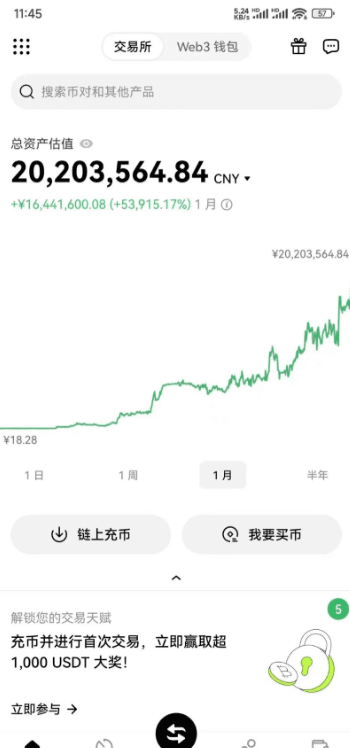
The practical rhythm of rolling 3000U to 608W U is only said once! Give it to the brothers who are still holding on
First highlight the key points: This is my actual combat method from rolling 3000U to 8W U. The core is not gambling, but 'living + rolling profit'. If you want to try it, first weld the rules to the trading interface:
### First establish a 'life-saving clause'
Treat 3000U as the last bet of capital, and first write a 'stop loss commitment': lose 5% in a single transaction, directly close the software; if the retracement is 15% on the same day, immediately disconnect from the Internet and go to sleep. Remember, you can only talk about making money if you survive in the currency circle to the end.
### Day1-7: Lay the foundation
Opening a position is not shorting, it is 'trial and error voting'. Only place orders at key support/resistance levels, the first order is at most 200U, cut it in seconds if it is wrong, and never carry the order.
As long as the profit is enough for 2 times the risk (2R), immediately withdraw the principal and 'float and play' with half of the profit. Before closing every day, move the stop loss to the opening position and let the market watch the market for you, and the profit will automatically rise.
### Day8-14: Add gears
The first time the account breaks 6000U, first withdraw 500U to buy a cup of milk tea - profit is in the bag, the mentality can be stable.
Then increase the order volume to 500U, but suppress the risk to 3% - when the position is large, you have to be more cowardly, which is called 'anti-human position control'.
### Day15-21: Play with thinking, not leverage
After accurately judging the trend, pull the profit-loss ratio to 3:1, and change the holding position from 'hourly line' to 'daily line level'.
Floating profit increases positions only when the callback stops falling, never chase the rise! Every time you increase a position, take away 20% of the profit, so that the account always has a 'safety cushion'.
### Day22-30: Profit-locking sprint
Target 4W→8W, do not increase the risk of a single transaction, change to the 'profit cushion' play:
Every time you earn 8000U, withdraw 3000U and deposit it in a cold wallet, and continue to roll the remaining 5000U. The account curve can only go up or sideways. If the retracement is 10%, reduce the position back to stage B. Stability is more important than speed.
Finally, three sticky notes are attached to the screen:
1. The market you don't understand = other people's money, don't reach out!
2. Stop loss is one second faster than you react, execution must be ruthless!
3. Compound interest is the interest given by discipline, not gambling!
The 30-day cycle, from 3000 to 8W, depends on the rhythm and taking profits. Survive, let the profits run themselves, this is the way to roll positions in the currency circle.
The reason why most people's positions are liquidated is not that their technology is poor, but that the order is wrong: they want to win as soon as they come up, but no one teaches them how to not lose first.
The following is the process of me tearing the three notes and showing them to him again, and it is also the complete guide to the 'poor man's game' that I am giving to you today.
Memo 1: Stop Bleeding - First sew up the holes that lose money
On the day 10,000U arrived, I asked him to do an elementary school arithmetic:
• 50% Spot: Only buy the top 20 by market value, then delete the 3rd, 7th, and 15th - those three are landmines buried by the dealer.
• 30% Arbitrage Pool: Lock it in a cold wallet, give me the key, and don't move it unless a signal appears.
• 20% Life-Saving Money: Put it in a hot wallet and write 'Never Trade' and stick it on the phone case.
Seven days, only do one thing: remove the word 'short' from the dictionary.
Memo 2: Bloodletting - Let the exchange work for you
Once the bleeding period is over, I handed him the second sentence: The price difference is profit, the fee rate is interest, and the fluctuation is a red envelope.
I wrote the specific process on a piece of A4 paper, copied two copies, one pasted on the monitor and one stuffed in the wallet:
1. If the spot price difference between the two exchanges is ≥1.5%, take a screenshot immediately;
2. If the perpetual fee rate is continuously negative for 12 hours <-0.02%, alert immediately;
3. Simultaneously satisfy that A buys spot goods, B shorts, and swallows three times the profit in one gulp.
That piece of paper was rubbed and frayed after 30 days, and his account had 40,000 U more.
Memo 3: Ambush - Staking out at the delivery room of new coins
After the account broke 50,000 U, I gave him the third note, which only had one line:
'The dealer is most afraid of you being more familiar with his system than him'.
New coin contracts within 72 hours of launch, the market is the thinnest, the pin insertion is the most fierce, and the liquidation engine occasionally short-circuits for 3 seconds.
• Use only 3x leverage;
• Bury limit prices in advance at the pin insertion position;
• Leave immediately when triggered, no nostalgia.
In the case of TON, he used 20% of his position to eat up 87% in 8 minutes, then turned off his computer and went to the gym.
Finally, stop asking where the next hundred times coin is, first ask yourself:
Have you learned how to stop bleeding?
Do you dare to draw blood?
Are you ready for the ambush?
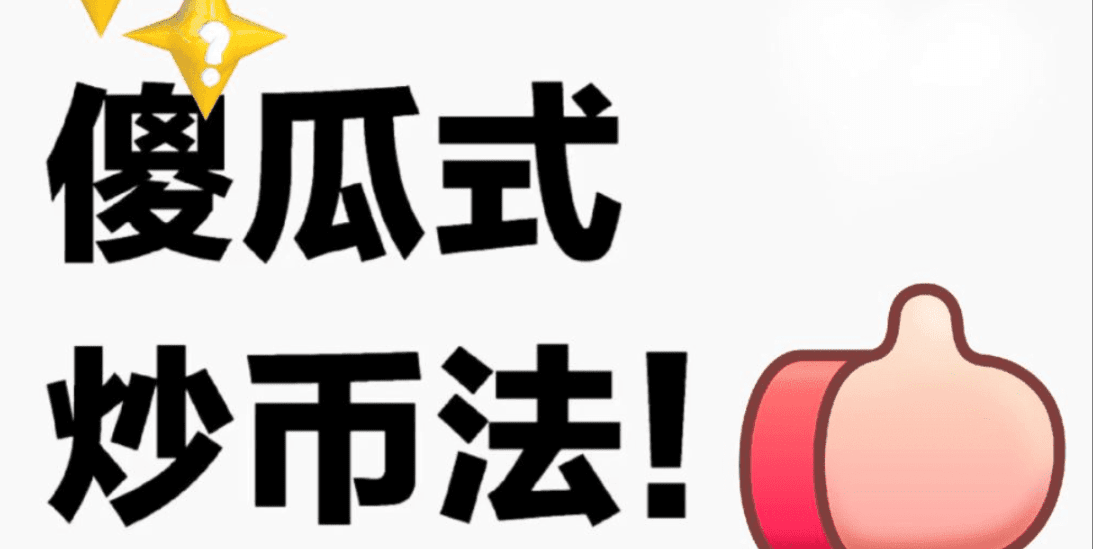
Gold Trading Discipline: 7 Rules from Liquidation to Stable Profit
1. Position Management: Always the 2% Stop-Loss Rule
- Specific execution:
- Account 100,000 yuan → Single stop loss ≤ 2000 yuan
- Calculated based on the current volatility of gold ($20 per day on average):
- 1 lot = $1000 fluctuation → Maximum 0.2 lots (2000÷1000)
- Lesson learned from blood and tears: In March 2023, a heavy position of 1.5 lots resulted in a single-day loss of 7,500 yuan
2. Time Discipline: Never open orders during these three periods
- Restricted periods:
Beijing time
- 15:00-15:30 (London opening liquidity trap)
- 20:30-21:00 (before and after the release of US data)
- After 2:00 AM (New York tail liquidity dries up)
- Real Case: On the non-agricultural night in January 2024, I impulsively went long at 20:32 and was stopped out for $18 in 3 minutes
3. Technical Discipline: Enter the Market Only After Double Confirmation
- My gold trading system:
Trend filter: Only go long above the 4-hour chart 20EMA
Signal confirmation: Pinbar + MACD divergence appears on the 1-hour chart
- Typical mistake: In September 2023, I entered the market based on a 15-minute 'golden cross', but encountered a false breakthrough
4. Profit Protection: Three-Step Method of Moving Stop Loss
Taking going long as an example:
① Cost price + $5 → Set breakeven stop loss
② Profit $20 → Move the stop loss to the cost price + $10
③ Profit $50 → Change to stop loss at the previous low on the 4-hour chart
Actual combat effect: In April 2024, gold rose from 2280 to 2350, completely eating up the $70 market
5. Emotional Discipline: Fill out the self-assessment form before trading**
- Self-check questions:
- Did you sleep ≥6 hours last night?
- Have you just experienced a profit/loss?
- Is there any life pressure currently?
Data statistics: The win rate in transactions when emotions were not good in 2023 was only 41%
6. Review Discipline: Daily 3 Questions Log
Fixed template:
Today's best transaction: ______ (Which rule does it comply with?)
Today's worst transaction: ______ (Which discipline was violated?)
Tomorrow's focus: ______ (Key price level/event)
Cumulative data: After insisting on review, the win rate increased from 52% to 63%
7. Withdrawal Discipline: First withdraw 20% of profits
- My tiered withdrawal method:
- Weekly profit >5% → Withdraw 20%
- Monthly profit >15% → Extra withdrawal of 10%
- Transfer withdrawals directly into fixed deposits in the four major banks (to prevent itchy hands)
Achievement: Total withdrawals of 148,000 in 2023, exceeding the original annual salary by 50%
Discipline execution tool recommendation
1. TradingView Alert: Set voice reminders for key price levels
2. Excel Trading Log: Automatically calculate win rate/profit-loss ratio (template can be shared)
3. Physical Stop Loss Method: Lock the screen and take a walk for 20 minutes immediately after placing the order
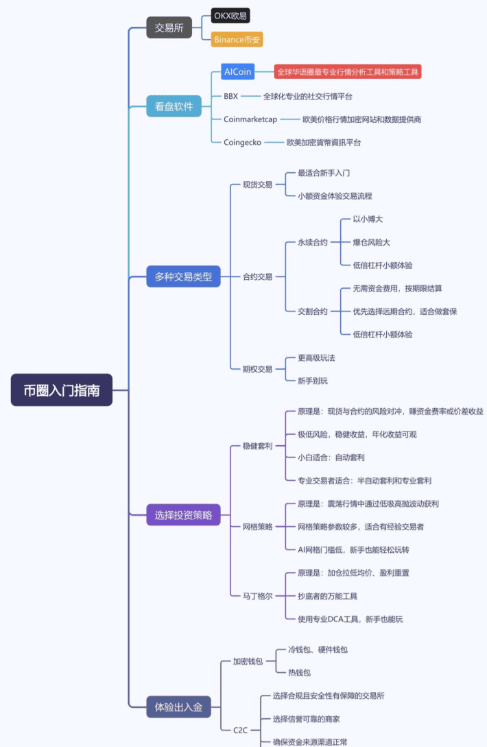
In the end, only the fool's tactics can make money in the currency circle
Jesse Livermore's famous saying: 'Money is made by sitting and waiting, not by operating'.
Some people may wonder why Jesse Livermore, the king of speculation in the United States, can say such things.
You may not be familiar with this famous investor, but you must have heard of his best-selling book (Reminiscences of a Stock Operator).
Livermore's theory is actually the earliest stock technical school.
His original words were: 'Money is made by sitting and waiting, not by operating'.
Money is made by sitting, which means that you must be patient in a situation that is beneficial to you. Including when you are empty, you must be able to endure loneliness, sit and wait, control your hands, and wait for the right opportunity to enter. Similarly, it is the same when you hold a favorable position, you must be able to endure and believe that the stock in your hand will eventually perform. Of course, the premise is that your logic is correct, the logic has been verified, and the facts prove that you are correct. At the same time, you must pay attention to the flexibility in the middle.
'Money is made by sitting and waiting, not by operating'. It is to insist on long-term investment and value investment. And avoid short-term investment and frequent operations.
Since you choose to hold coins for a long time and are optimistic about a certain track, then kill all distractions. Life is limited, focus on one point and dig 1000 meters deep, and you will have hope of making money. The sun is so strong, why is it weak when it reaches the earth? Why can the sunlight under the magnifying glass start a fire? Because of focus. Similarly, trading is also the same, you must break away from short-term contracts, exert your strength in one hole, move forward one step a day, and there is no reason not to make money.
Coins are like people, they have life, old age, sickness and death. The market is like people's emotions, many times, they love each other to death in the morning, and break up happily in the afternoon. People's changeability exceeds your imagination. Similarly, the market is also like this. A small piece of news may reverse the current market..... Therefore, short-term is difficult to predict. I have always advised everyone not to gamble. Long-term is gold, short-term is scrap iron.
Speaking of trading, I mentioned before that trading is to accompany the project party to grow together, and there will be ups and downs in the short term, which is normal. As long as it is growing, making money is only a matter of time. Since daily mood cannot be predicted, but birth, old age, sickness and death can be expected, there is no reason not to follow up.
Don't gamble, nine out of ten bets lose, scientifically lay out, plant seeds, and accompany them to live, get old, get sick and die. The economy has cycles, follow the rules, it is difficult to lose money. Some people say, if everyone holds coins, can this still make money? It must be possible, many people are fake coin holders and cannot persist for long.
Few people can persist, and what you have to do is to kill them. Long-term is sowing. Strictly speaking, selection is more important than short-term, because it determines whether you can earn a lot. Without a doubt, absolutely stable varieties must be held. Potential stocks and potential coins cannot be abandoned. As for which specific one, judge for yourself.
As an investor, you must have your own playing style. The reason why I gradually introduce my ideas is to inspire you to form your own thinking. This is the core for you to stand in the currency circle for a long time, and it is the key to not being fooled by new concepts.
In the currency circle, many people do not have the ability to judge, so everyone loves to ask, A says this coin is good, B says that coin is a pit, saying it back and forth, making you confused, not knowing what to buy, changing it back and forth, buying it back and forth, and finally the coins are dry and the money is gone. In my opinion, being smart is the biggest enemy of trading. You always think you are lucky and will not become a soul under the sword of the dealer. You jump around and end up being shot. There is a theory called the new hand law, which probably means that new people will have good luck when gambling. Do you believe it? I believe it. If it doesn't do this, how can I keep tricking you? Stupid people have stupid luck, and new people should ask for more luck.
There are always people who think that I am smarter than him. He has bought a hundred times coin, and I should be able to make a lot of money in the currency circle. Can being smart make money? Think too much, brother. It is difficult to make money in the currency circle without a clumsy effort, unless you are extremely smart, but how many people are there? There are too many smart people, and they are not worth much. Fools can make more money. If you don't believe me, look at those coin-hoarding bosses, which one was not a smart person and now a fool.
Many people cannot understand the matter of sticking to it. What is sticking to it? It is that I recognize this coin and hold it for a lifetime, unshakable, ignoring all negative information, shielding all noise, and being extremely calm in my heart, even if it goes to zero. As the saying goes, without the heart to go to zero, there is no life of a hundred times.
Many people are miserably trapped in the bear market. Once the bull market comes, they double it and leave, and they regret it. Therefore, they will not give up until they reach the Yellow River. They will not run until they reach the expectation. It looks stupid, but it is good to make money.
Insiders in any industry make money from outsiders.
I don't understand the trend, I don't understand investment strategies, I don't have a systematic investment method, and I am unwilling to learn experience from experts.
How can we successfully mine gold in the financial market with the most smart people?
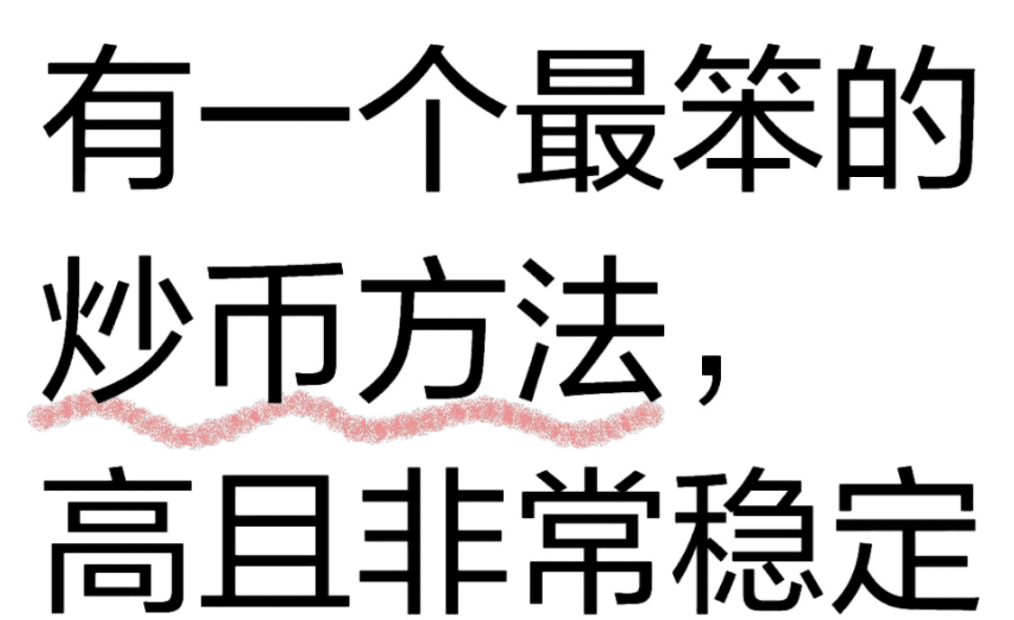
Fund management:
I will only talk about the fund management of the spot part here, and the fund management of the contract part will be detailed in the next article.
Fund management should be the second most important task after target screening in the currency circle investment, which directly determines whether you can make money, and is also the lifeline for you to survive in the trading market for a long time. Mastering good fund management strategies can not only protect the principal well and prevent risks, but also reduce retracements and protect profits, and ultimately increase your risk tolerance several times.
The essence of spot fund management is which target to buy how much and how to sell it. As mentioned in the previous article, I adhere to the principle of simplicity and simplicity. In order to concentrate the firepower of funds and eat the core dividends of the market, I generally do not hold more than 5 targets at the same time.
Therefore, in terms of fund allocation, I usually allocate about 70% of the funds to the 2-3 targets that I am most optimistic about, and then allocate 20% to 2 targets, and 10% of the funds are always empty, leaving them to grab the most powerful targets when the market is hot, and do medium and short-term waves, holding positions for about a week, and realizing profits in the market with a blitzkrieg mindset.
Then there is the question of how to buy and sell. If the trading technology is not superb, buying and selling in batches is definitely the best strategy, so the key is to consider how to determine the ratio of buying and selling in batches. On this point, we need to find a balance between the contradiction of risk preference and purchase cost (or selling price).
Taking the buying phase as an example, a risk-averse operation is to wait until the downtrend ends and a clear upward reversal signal appears, and then choose an opportunity to buy in tranches. As the reversal trend gradually strengthens, continuously increase the position, but at this time it means that the lowest price range has passed, and the purchase cost will be slightly higher.
However, a strong risk preference needs to consider buying when the market is extremely panicked, which is to maximize the advantage of the purchase cost. However, at this time, the market does not give a clear signal of a reversal of the downtrend, and may need to bear greater risks.
Selling is similar to buying. Selling in a rising trend when market sentiment is at its highest may sell at the highest price, but it may also sell too early. Selling when the trend reverses may not have much advantage in selling price, but it is more stable.
Therefore, how to operate in batches when buying and selling largely depends on personal risk preference. A strong risk preference is what we often call left-side thinking, and a weak risk preference is right-side thinking. Each has its advantages and disadvantages, as long as you control the overall risk, there is no big problem.
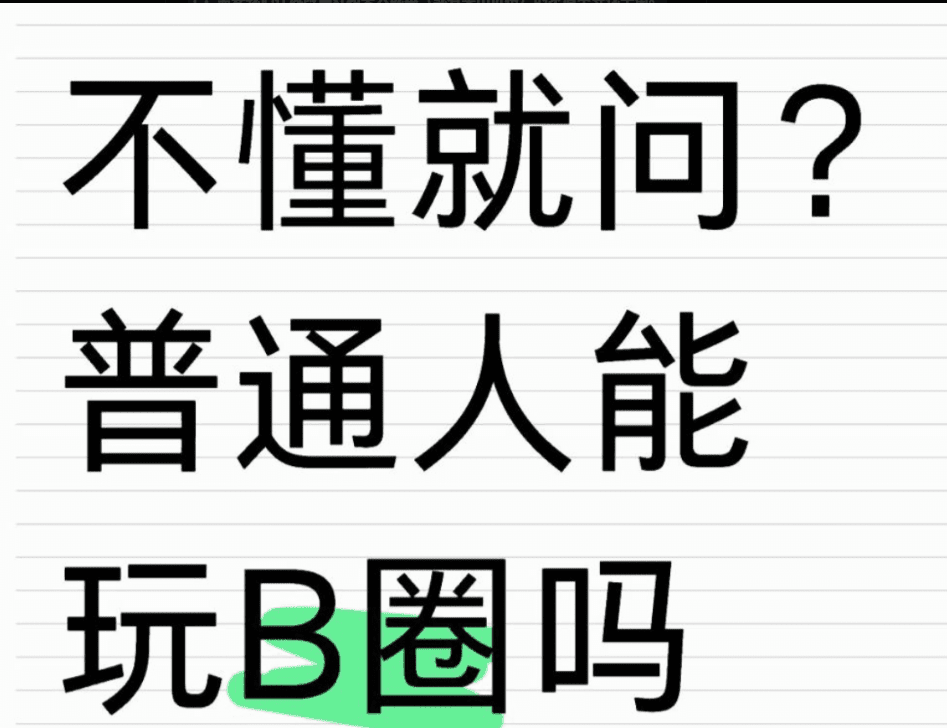
Iron Law of Survival in the Currency Circle: The More 'Stupid' You Are, the More You Earn, 90% of People Fall on the 'Smart' Road
After struggling in the currency circle for many years, I have seen too many people's positions liquidated and leave the market with nothing. In fact, most people do not lose in the market, but lose to their own 'smartness' - always thinking about taking shortcuts and finding shortcuts, but ignoring the most simple 'stupid methods'. Today, I will reveal the truth about survival in the currency circle. Those who can understand it thoroughly can truly survive and make money.
I. 90% of People Fall into These Three Fatal Mistakes
(I) Chasing the rise and killing the fall, reverse operation
Once the currency price rises, they are eager to chase in, fantasizing about 'lying down and making money and taking off', and as a result, they are smashed as soon as they buy; when there is a real panic smash and the bottom appears, they are scared and dare not enter the market. Remember: people who can turn 'buying low when falling' into muscle memory are ruthless characters who eat cycle dividends. You can only copy the real bottom if you are greedy when others are panicked.
(II) Hard-pressing orders, gambling on the head
Thinking that recognizing a direction can 'get rich with one stroke', as a result, the main force smashes a few needles and creates some shocks, and they are washed out. There has never been a 'guaranteed profit' unilateral market in the currency circle. Holding a single order stubbornly will only give the initiative to the market. True masters know how to respond flexibly. If the trend is wrong, cut it, and don't fight the market to the death.
(III) Full position short, with no way out
If you go all in when emotions come up, even if you guess the trend correctly, you will miss better buying points because you don't have bullets; once the market reverses, you will be directly liquidated and cleared. Remember: Opportunities in the currency circle are always there. Only by keeping bullets can you have the initiative. A full position short is a gambler, not an investor.
II. The 'Six-Character Secret' Ignored by 90% of People, the Stupider the More Effective
(I) Don't mess around before the change
'A high level consolidation is not over, a new high is still to come; a low level sideways movement has no bottom, it is easy to create a new low'. When the market fluctuates, most people lose their patience and operate frequently, resulting in repeated slaps in the face. Remember: before the change signal appears, controlling your hands is winning, rather miss it than make a mistake.
(II) Sideways period, endure
'Never enter the market when it is sideways'. Sideways market is a trap for the main force to wear people down. The more you can't stand it, the easier it is to cut meat at the bottom and chase high at the top. True masters will observe and wait during the sideways period, and then take action when the change node arrives. The win rate will be directly full.
(III) Follow the emotions, follow the daily line
'Buy when the daily line closes negative, sell when it closes positive'. Don't be superstitious about your 'market sense', market sentiment is hidden in the K line. The negative line represents emotional panic, which is a low buying opportunity; the positive line represents emotional excitement, which is suitable for stopping profit and leaving the market. Doing things according to market sentiment is 100 times more reliable than making decisions based on your head.
(IV) Look at the rhythm and grab the rebound
'If it falls slowly, it will not bounce high; if it falls quickly, there will be a quick bounce'. The market rhythm determines the opportunity: do not bottom out in a downtrend market. The slower the rate of decline, the less selling pressure is released, and it is difficult to have a big rebound; a sharp drop in the market hides opportunities, and panic selling smashes out a golden pit. There is often a sharp rebound after a sharp drop. You can only seize it if you understand the rhythm.
(V) Pyramid, leave a backhand
'Pyramid-style position building, enter the market in batches'. Never short all at once. In a downtrend, buy low in batches; in an uptrend, stop profit in batches. Keep the bullets to deal with unexpected market conditions. True masters always leave a backhand for themselves.
(VI) After a Big Rise or Fall, Wait for a Signal
'There must be consolidation after a big rise or fall, and there must be a change after consolidation'. After extreme market fluctuations, don't rush to short or cut meat. The consolidation period is a 'power accumulation period' for long-short game. Wait for a change signal (breakthrough of key resistance / support level) before taking action, the win rate and income will be directly doubled.
III. The Truth about Survival in the Coin Circle: You Can Only Make Money If You Can Endure
The market never lacks opportunities, what it lacks is people who can 'stay stable, endure, and survive'. Don't envy the 'good luck' of experts. They just use these 'stupid methods' to the extreme - using patience to fight against fluctuations, using discipline to control risks, and using strategies to capture opportunities.
Remember: what you earn in the currency circle is not 'smart money', but 'stupid work'. If you can understand these iron laws, control your hands, endure, and execute steadily, your coin speculation path will become wider and wider, from being a 'leek' that is harvested to a 'hunter' that eats meat.
Finally, a reminder: the currency circle is risky, and operations need to be cautious, but as long as you master these 'stupid methods', you can gain a foothold in the market. #币圈现状
BTC BCH

